Video: Products over Progress - David Hussman ( https://www.youtube.com/watch?v=p7DeHPmu0nw )
company: devjam rename ‘software engineer’ -> ‘product developers’
Who are we going to impact Who cares about what we’re doing NOT who are the users often non-users are impacted

one of the mistakes: too focussed on construction, get things done
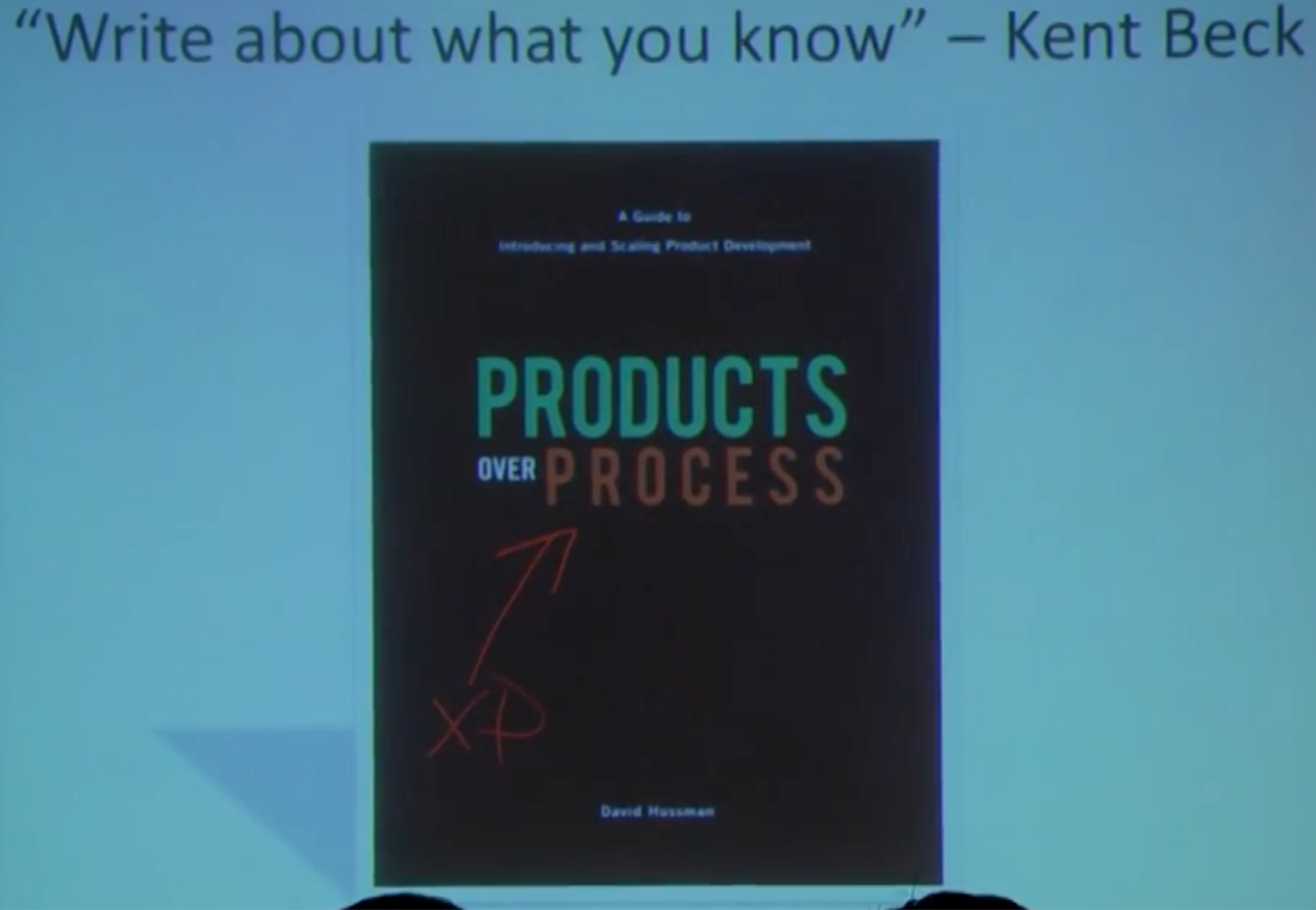 [ ] products over process - speaker
[ ] products over process - speaker
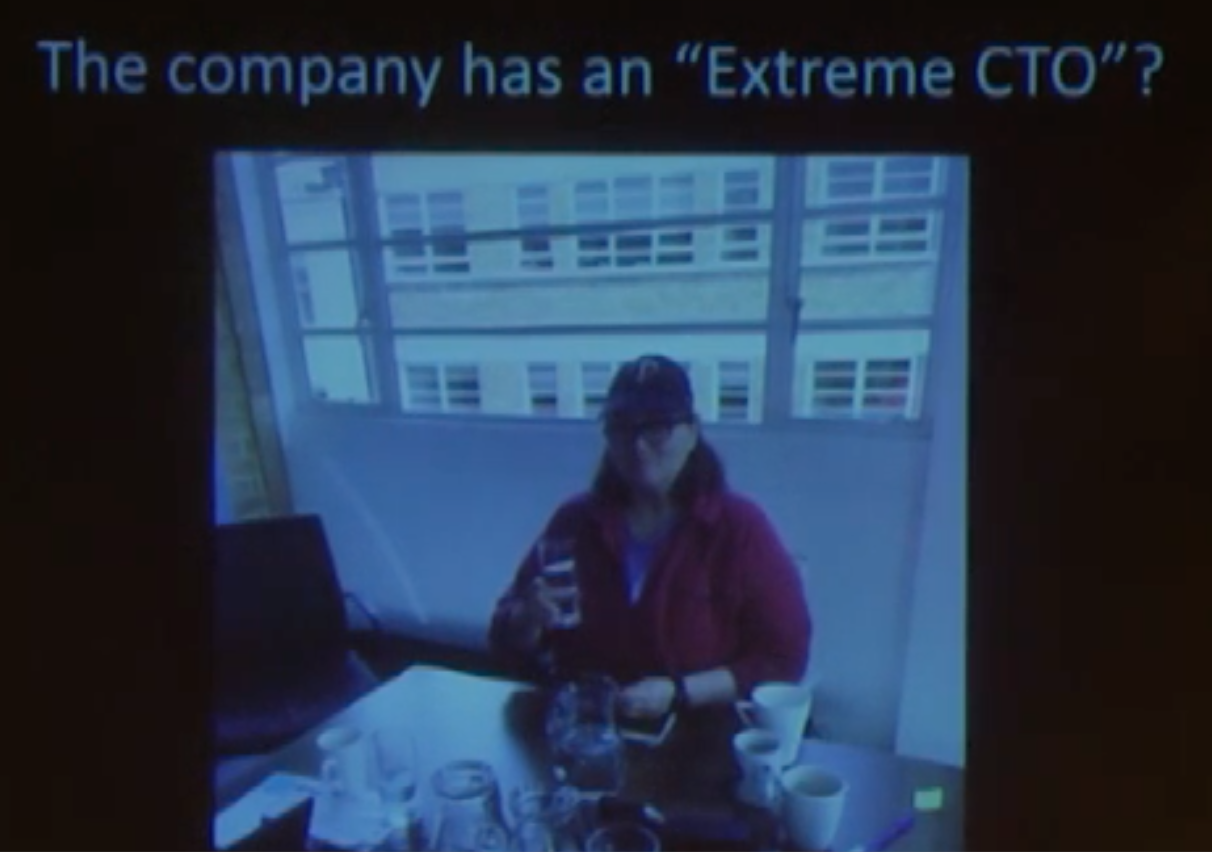 every time we we starting to deliver consistently, we needed to ask “are we doing the right things”
every time we we starting to deliver consistently, we needed to ask “are we doing the right things”
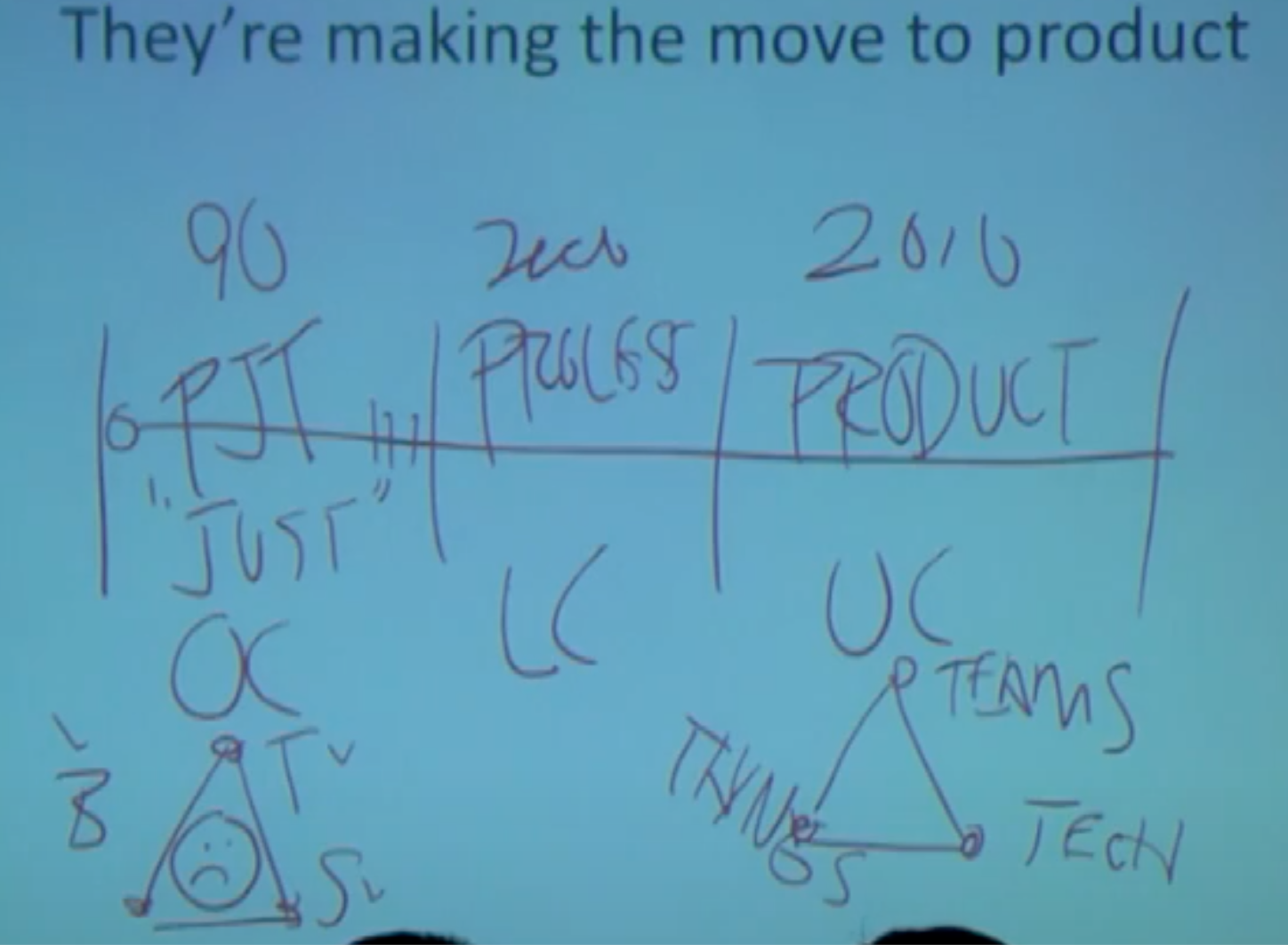 1990 project
just get things done
“if we’d get it done, we’d be succesful” (we didn’t get much done)
triangle: time - scope - budget
-> rewarded, even if we built the wrong thing
1990 project
just get things done
“if we’d get it done, we’d be succesful” (we didn’t get much done)
triangle: time - scope - budget
-> rewarded, even if we built the wrong thing
2000 process less certain, question things requirement -> story
2010 product very uncertain triangle: teams - tech - things(aka product) 1 team, 1 tech, 1 product -> all the agile books
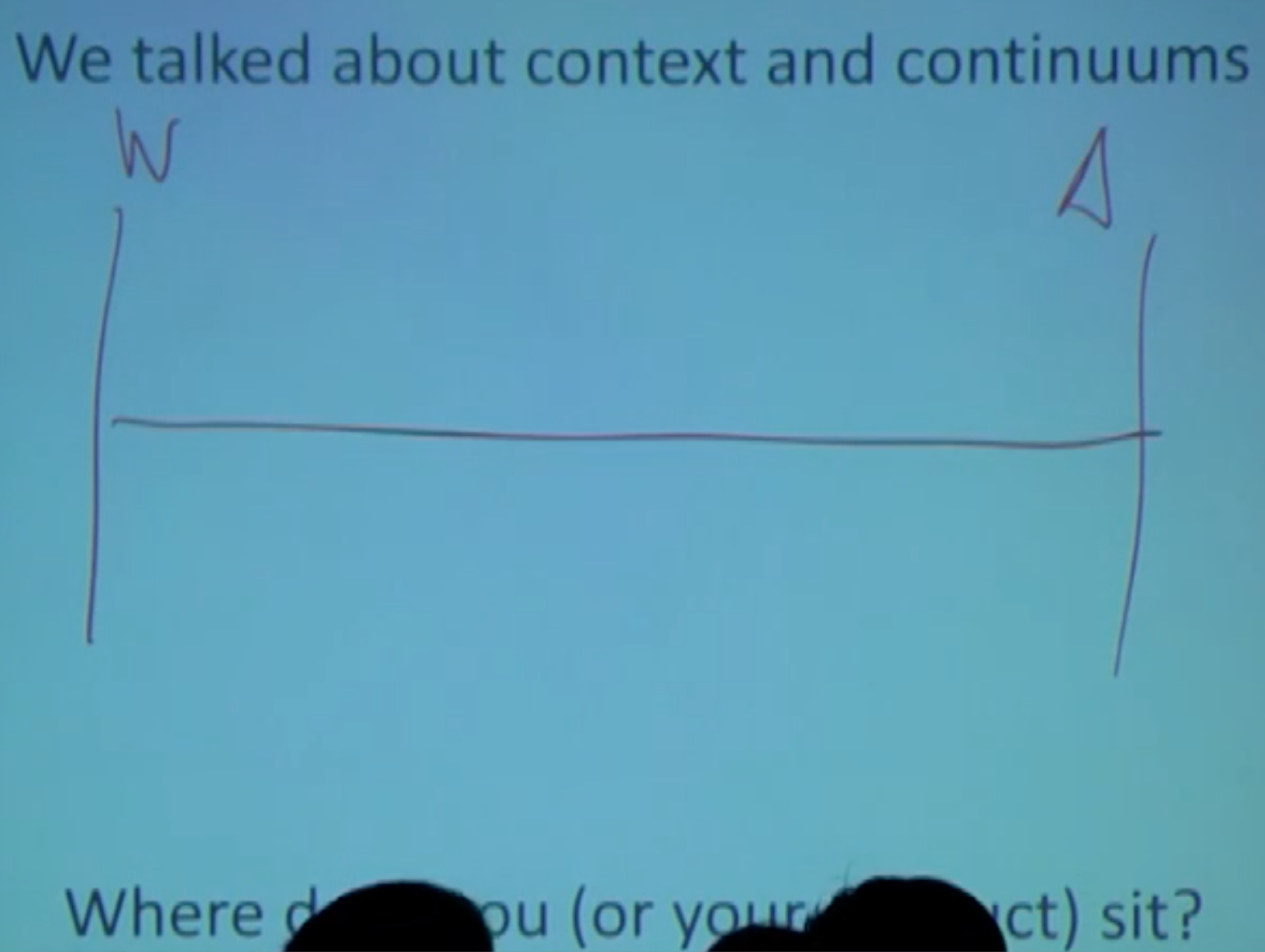 waterfall vs agile
more interesting:
known - unknown
certain - uncertain
static - dynamic
waterfall vs agile
more interesting:
known - unknown
certain - uncertain
static - dynamic
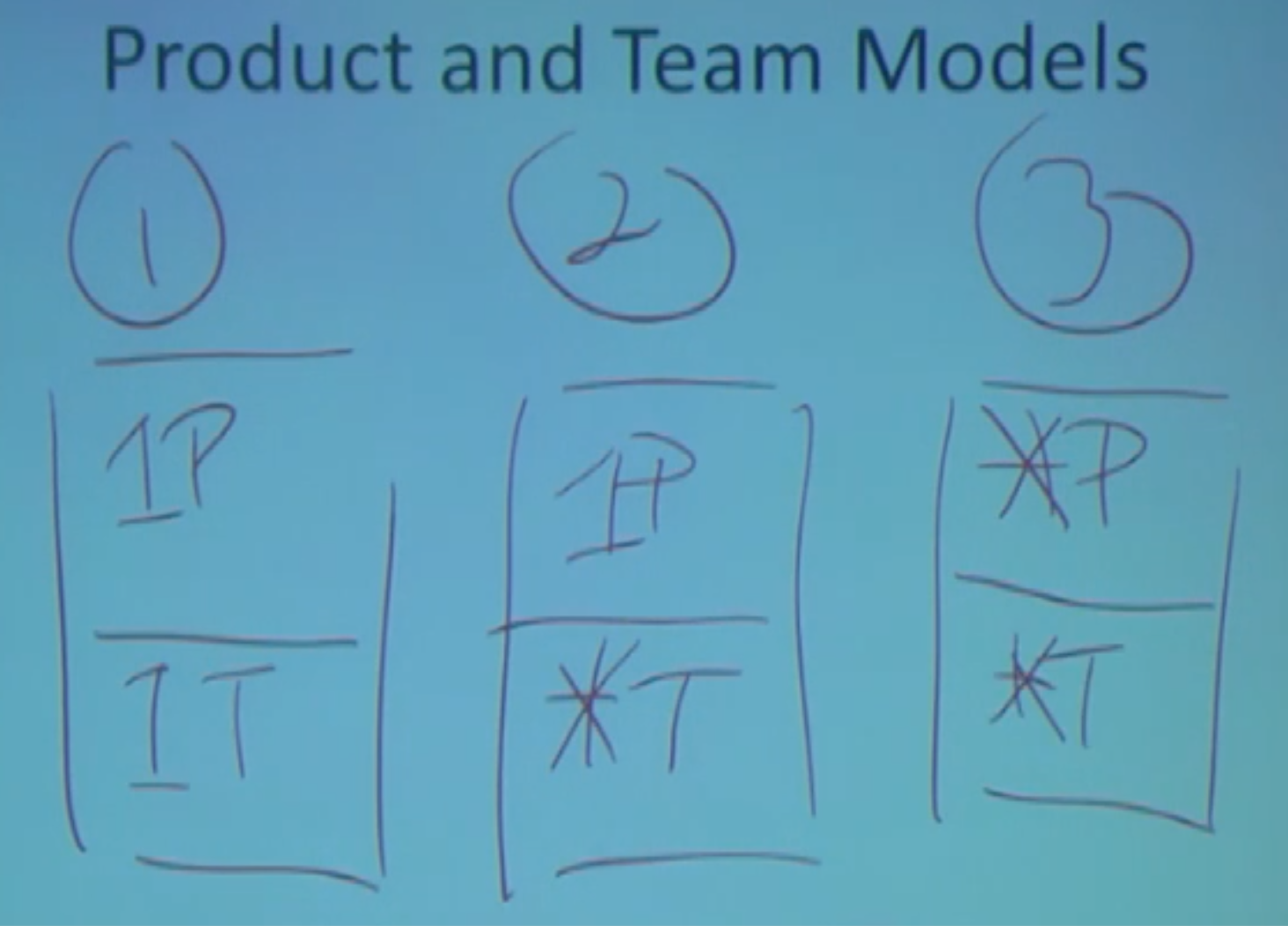 (1)
1 product
1 team
(1)
1 product
1 team
(2) 1 product many teams
(3) many products many teams
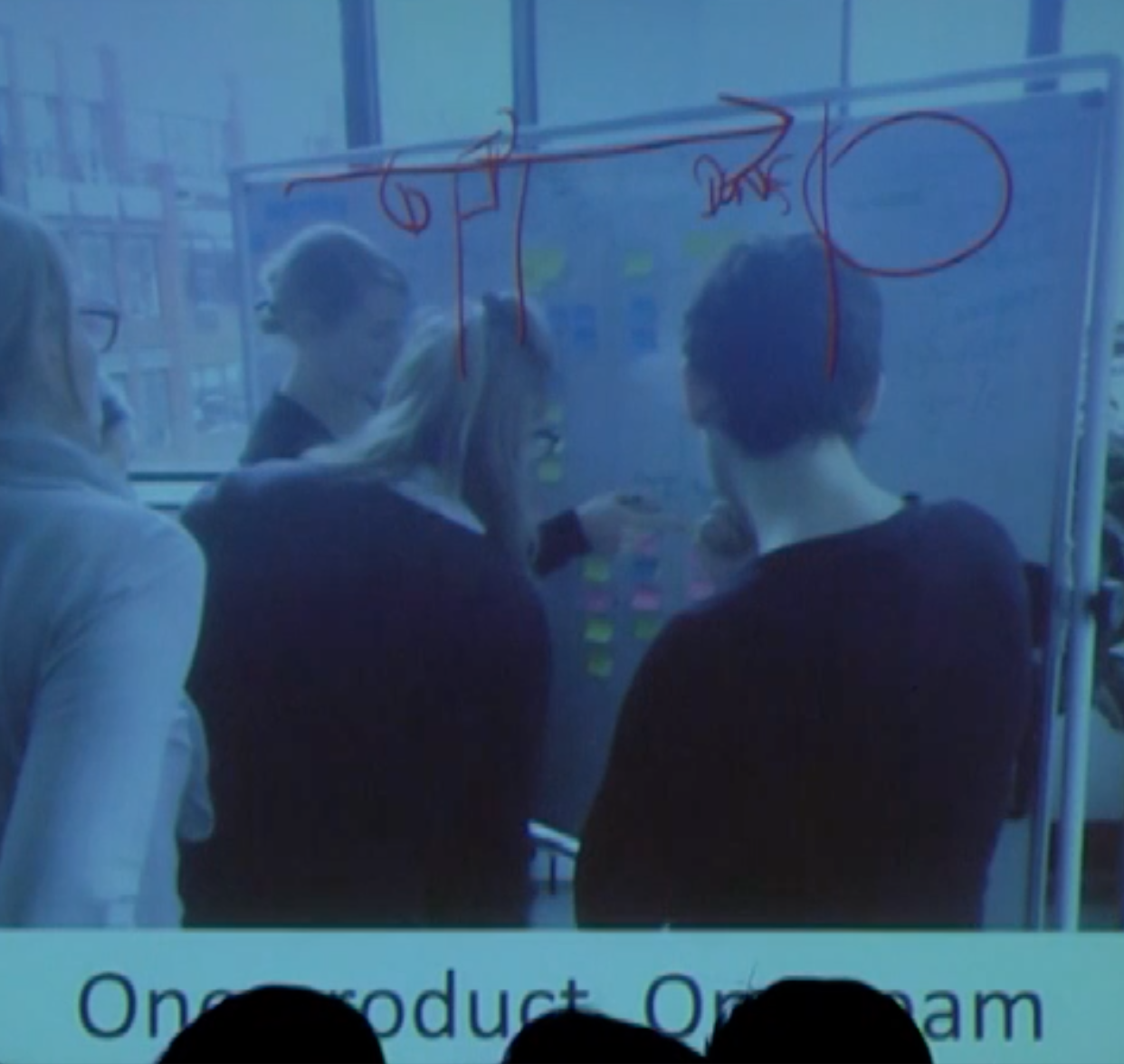 extra column: “valuable” or “validated”
“when you don’t pull things into progress, until you have some idea how you are going to validate them, you do less of the wrong thing”
extra column: “valuable” or “validated”
“when you don’t pull things into progress, until you have some idea how you are going to validate them, you do less of the wrong thing”
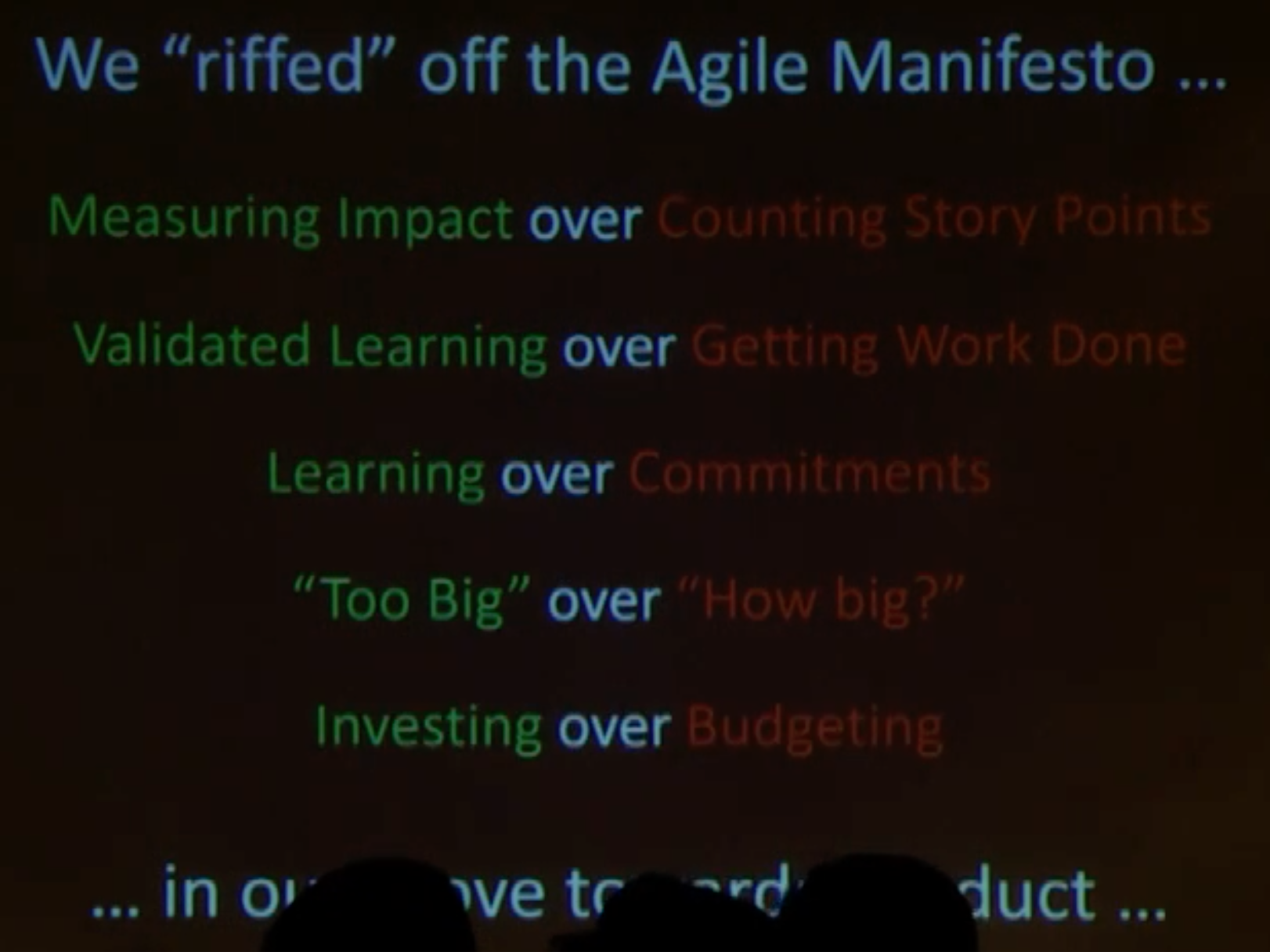
 storypoints aren’t actually value delivered
you’re merely measuring progress
storypoints aren’t actually value delivered
you’re merely measuring progress

 “you didn’t meet your commitments!”
fear
no learning
learn why you missed those commitments
“you didn’t meet your commitments!”
fear
no learning
learn why you missed those commitments
 start breaking it down into smaller pieces
start breaking it down into smaller pieces
 budgeting = certain
investing reflects uncertainty
budgeting = certain
investing reflects uncertainty
scaling agile -> often scale process

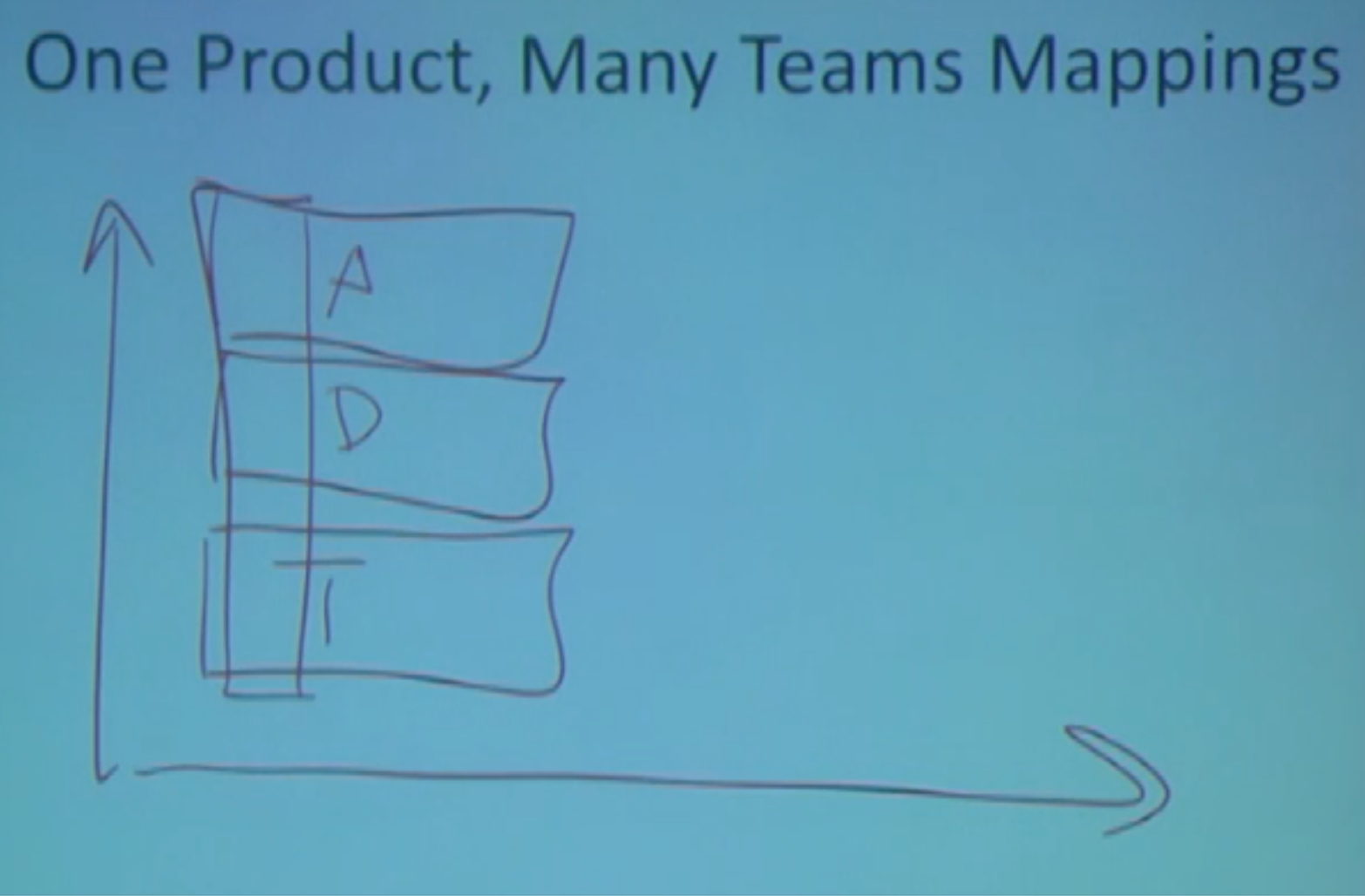 analyst
dev
test
analyst
dev
test
agile did well: cross functional
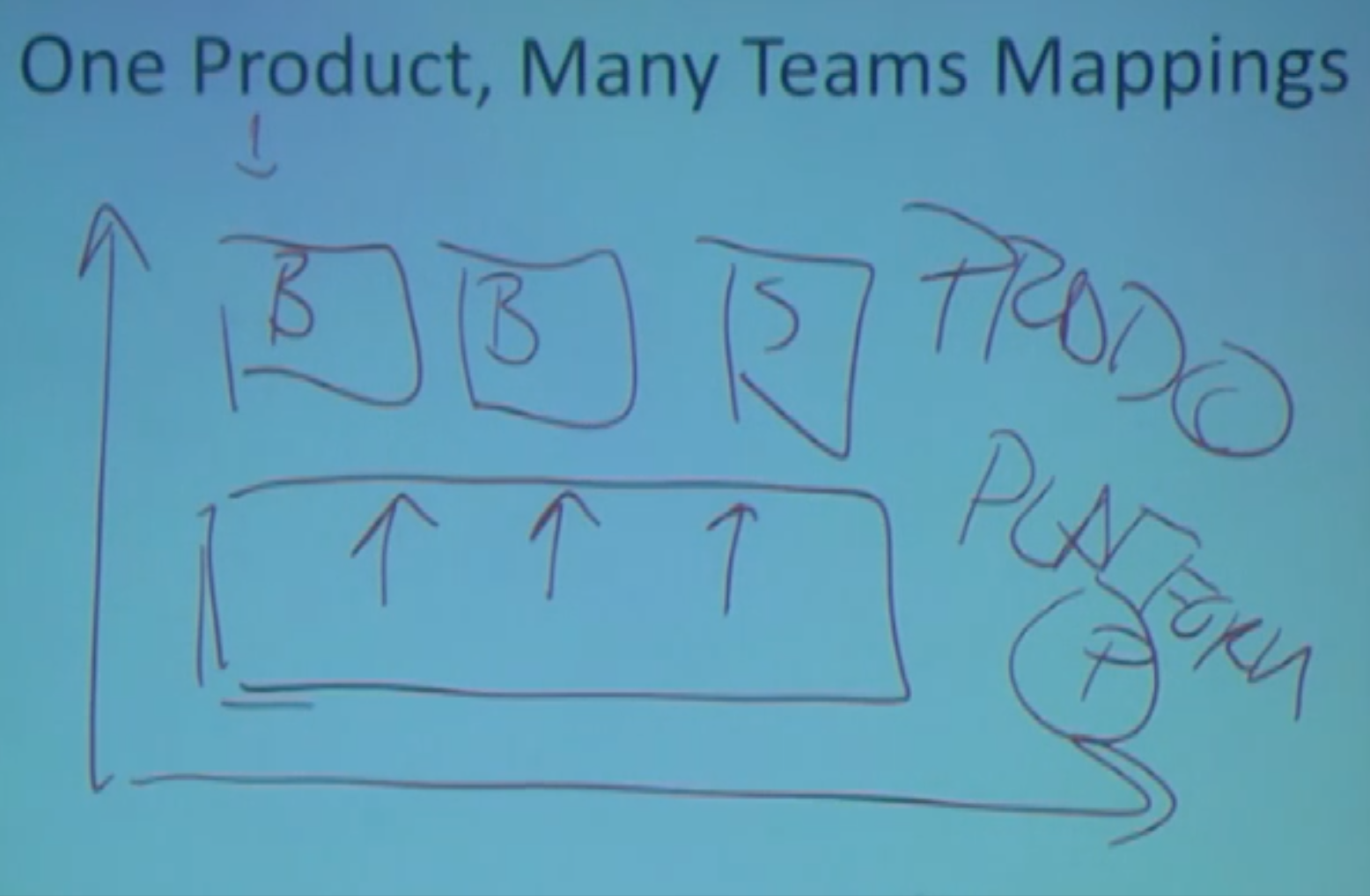
product & platform producer -> consumer
eg. retail: browse, buy, ship
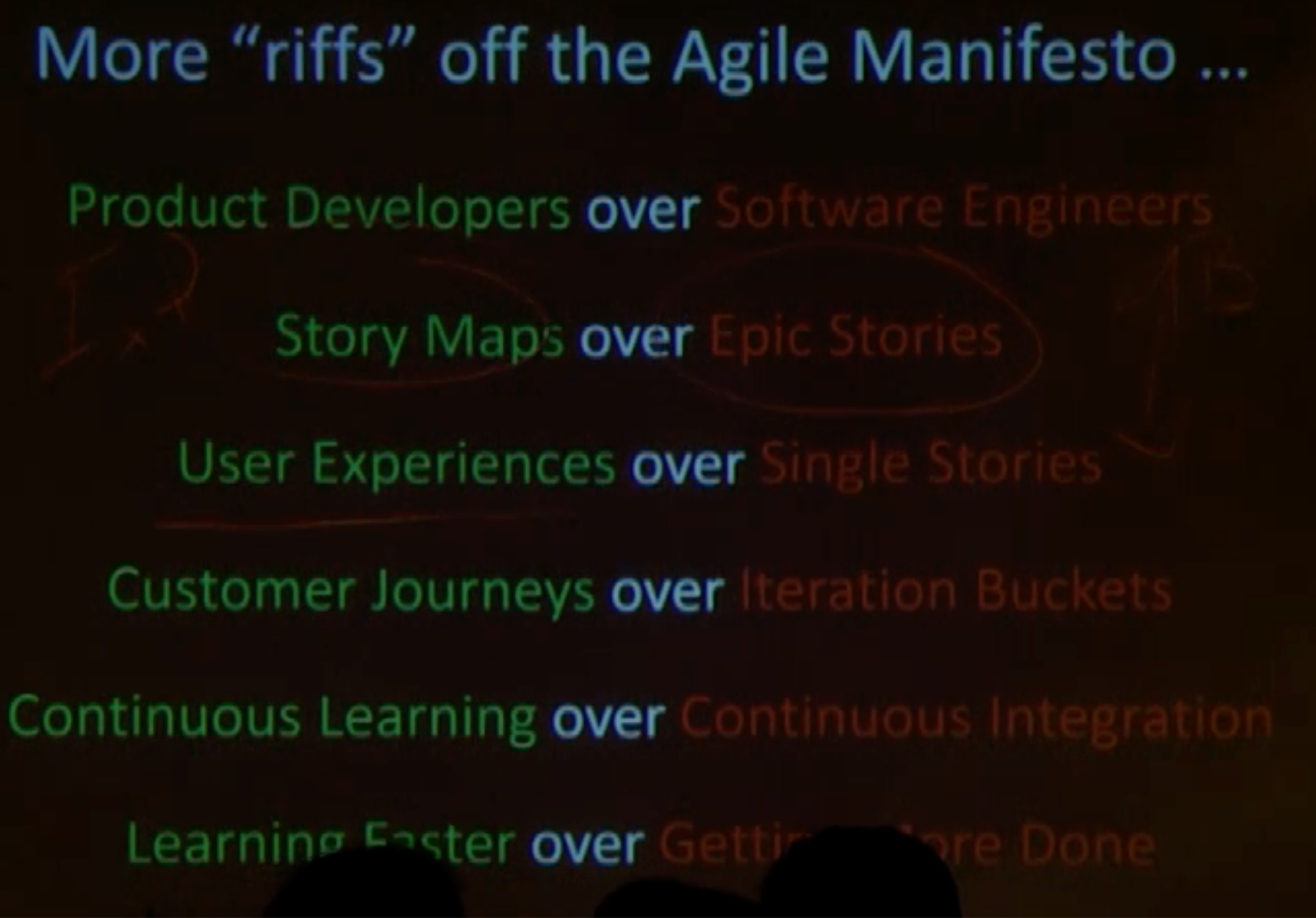
 customer does not care about technology
customer does not care about technology



 CI: do you do something with it?
CI: do you do something with it?
 if you’re getting the wrong stuff done faster, you should not celebrate that
if you’re getting the wrong stuff done faster, you should not celebrate that
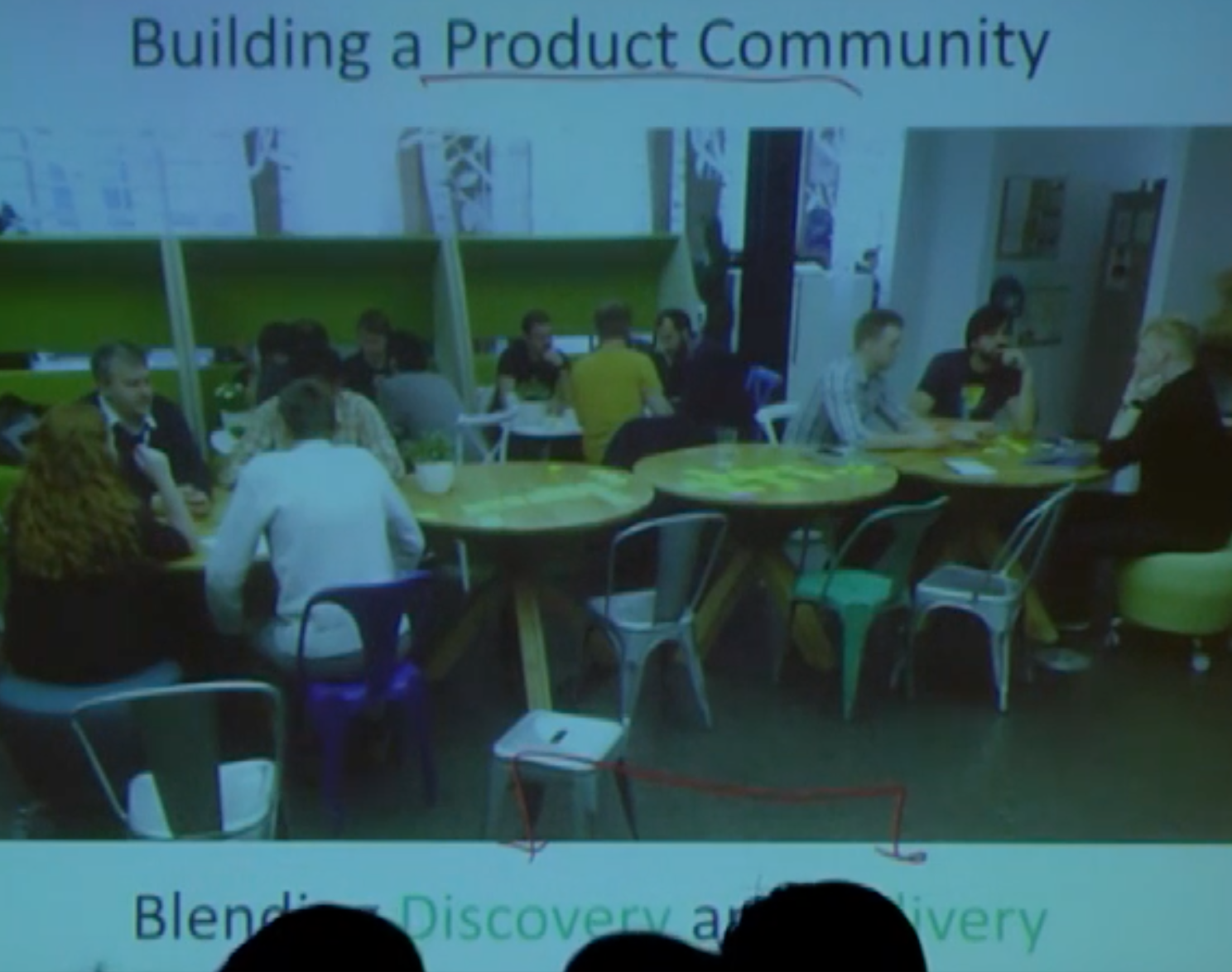 groups of engineers, sitting together, telling customer stories
groups of engineers, sitting together, telling customer stories
not taking orders for a sprint
“more developers should act like doctors instead of waiters”
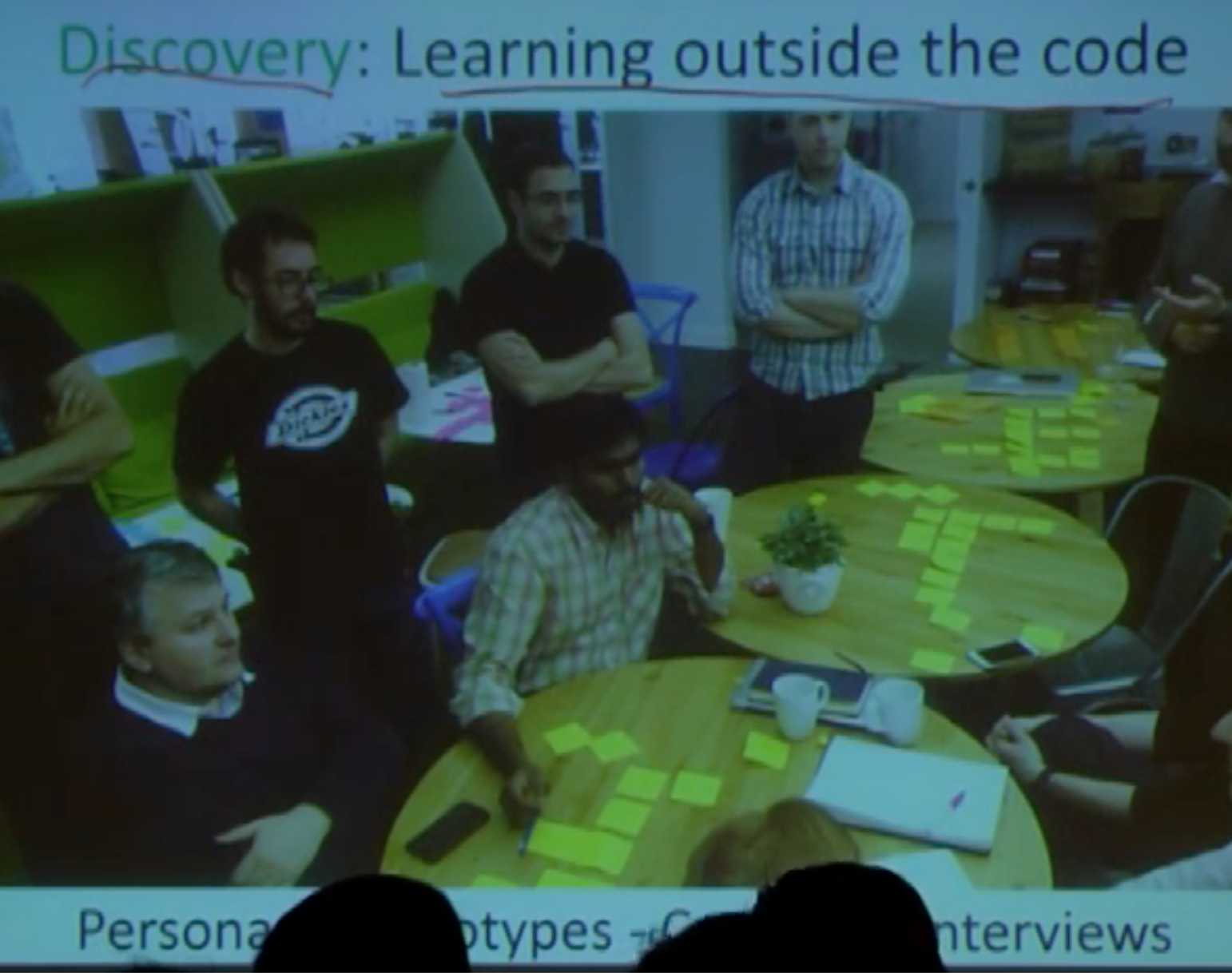 prototypes
interview customers (even harder for companies than building prototypes)
prototypes
interview customers (even harder for companies than building prototypes)
“the only code with no bugs, is no code”
intercom.io -> in-app communication not “chat” we start conversations with customers customers start conversations with us
“you can’t always talk to your customers”
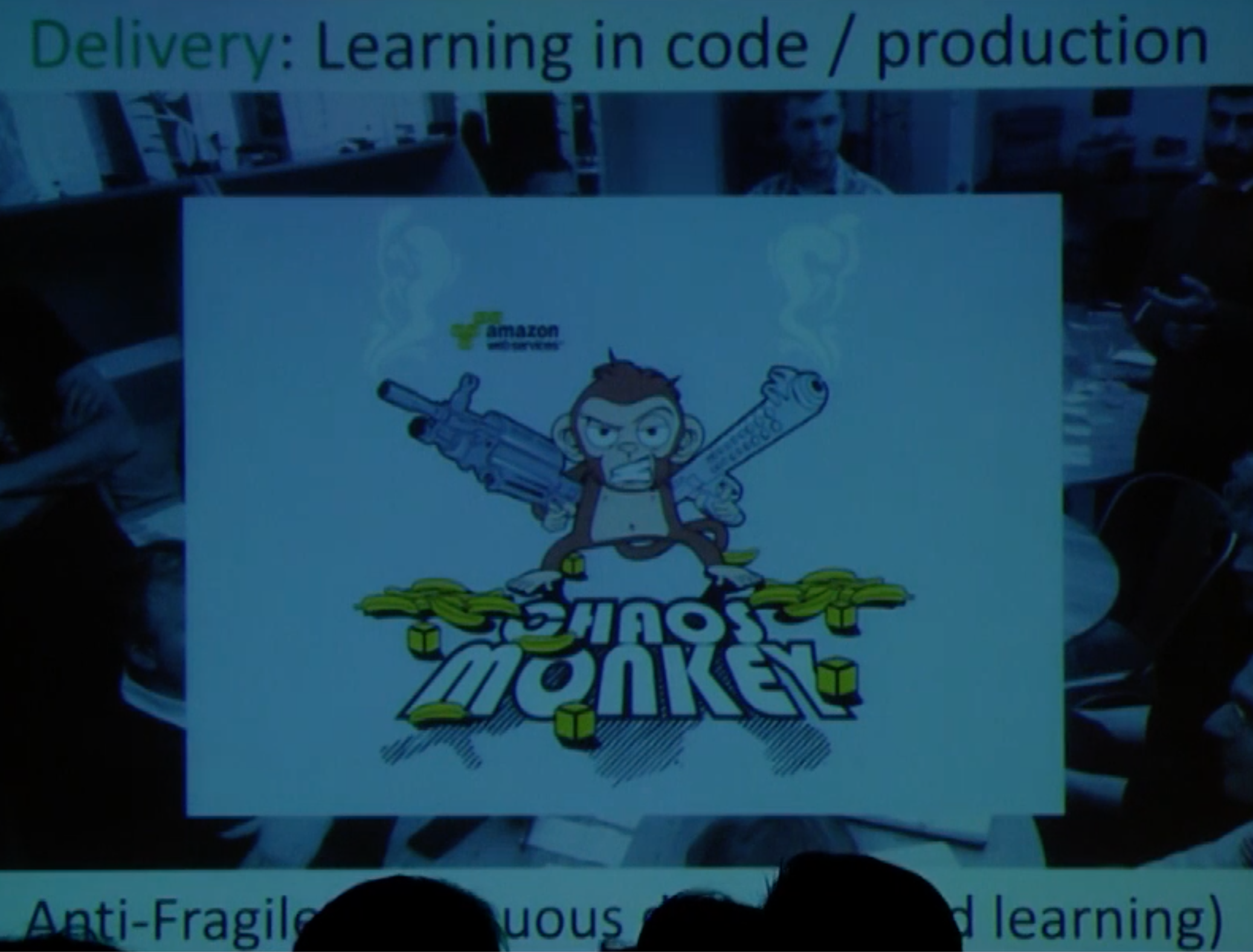
FIT let’s take someone’s request and kill it CHAP create control & experiment group, let’s inject faults
“so confident in their delivery, they dare to inject damage into their system” “now they can focus exploration”
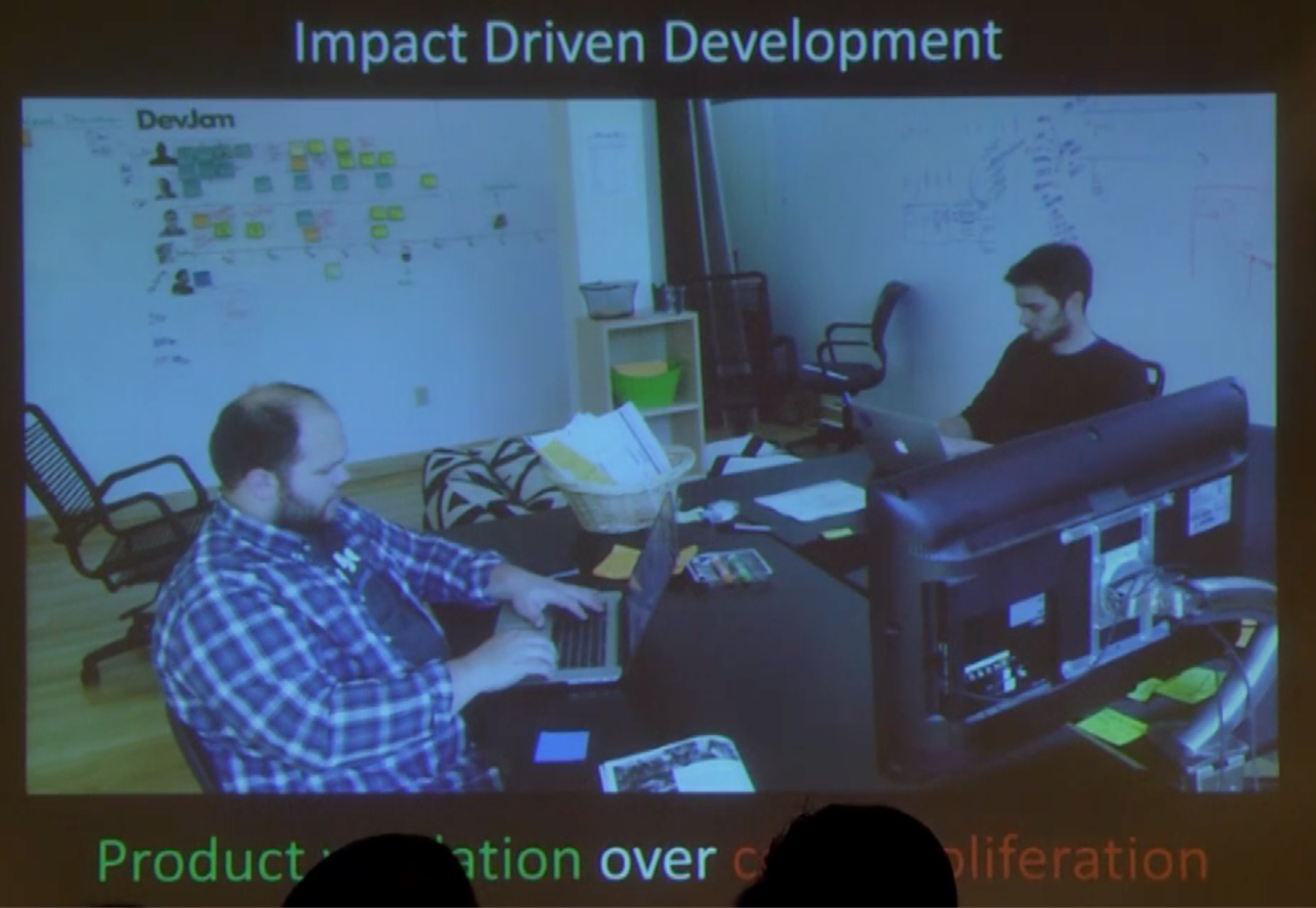 product validation over code proliferation
product validation over code proliferation
TDD: write test, then write the code -> if you write bad tests, you write bad code -> so tests speak to design
Acceptance TDD write test for the stories, then write stories -> even less code that was wrong
Impact
don’t start on a story, until you know how to measure the impact
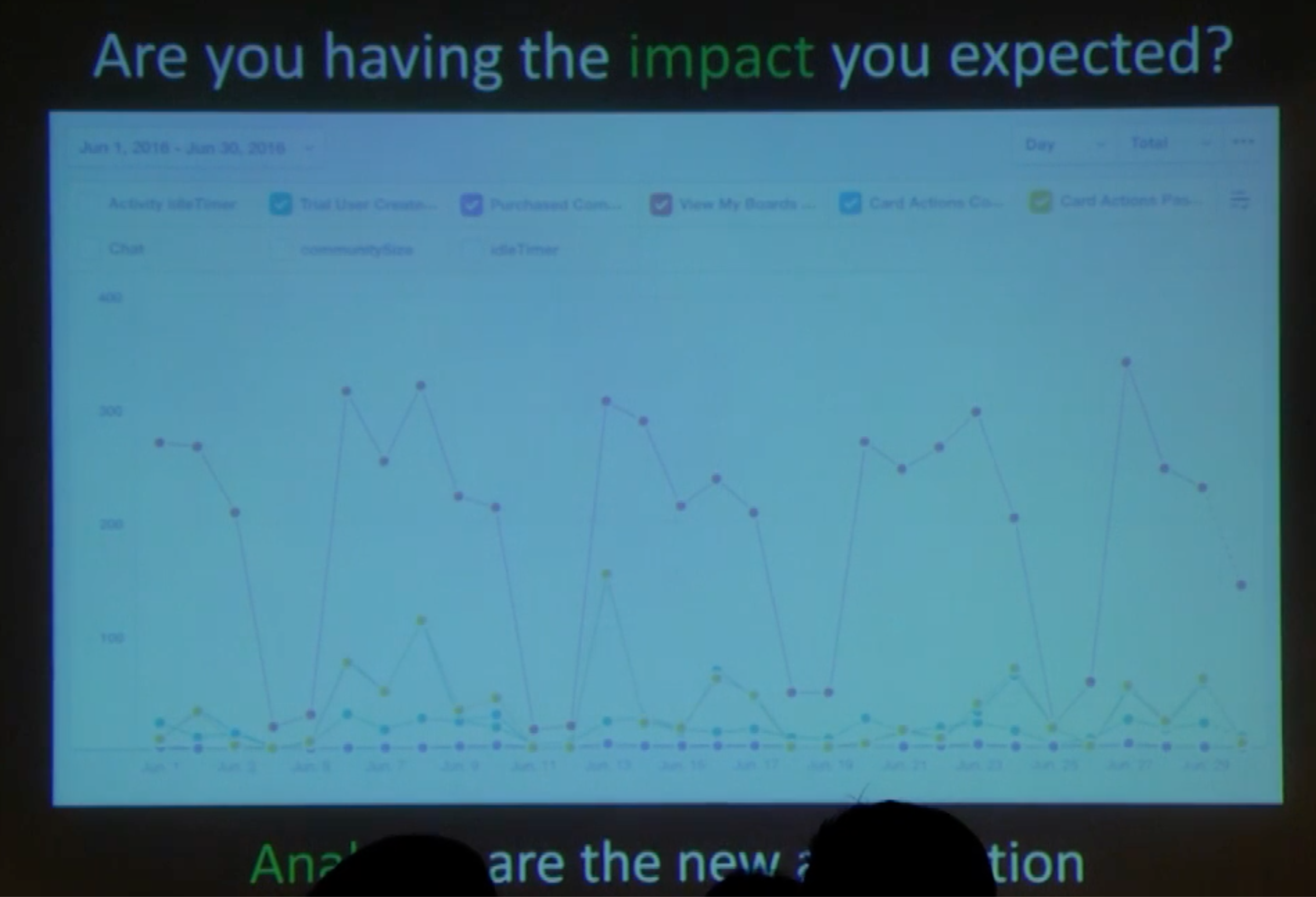 Product developers: beyond getting it done and doing it well, is it actually a good idea?
Product developers: beyond getting it done and doing it well, is it actually a good idea?
====
MANY products, MANY teams
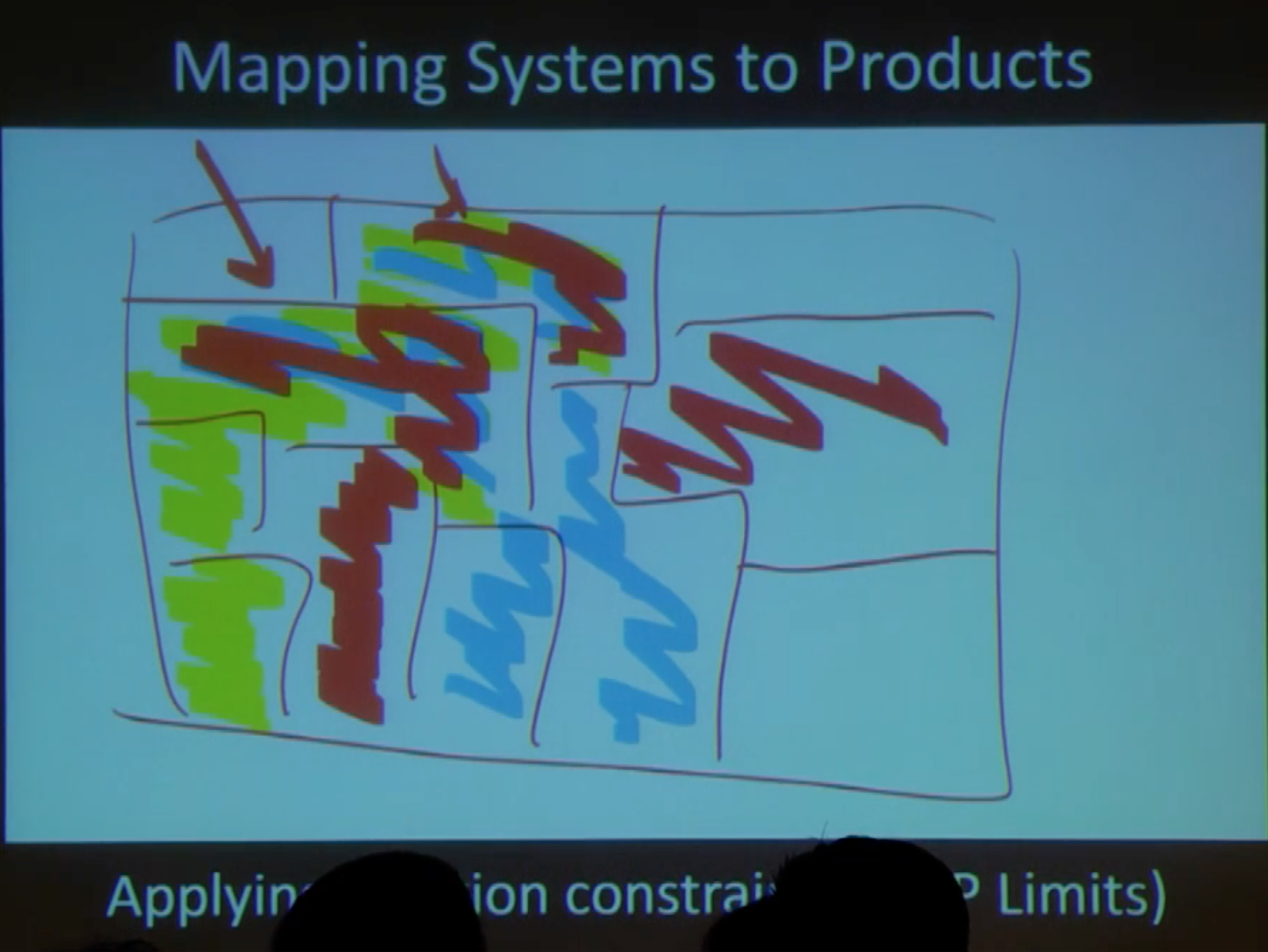 bottlenecks
bottlenecks
 agile coach -> product coach
agile coach -> product coach
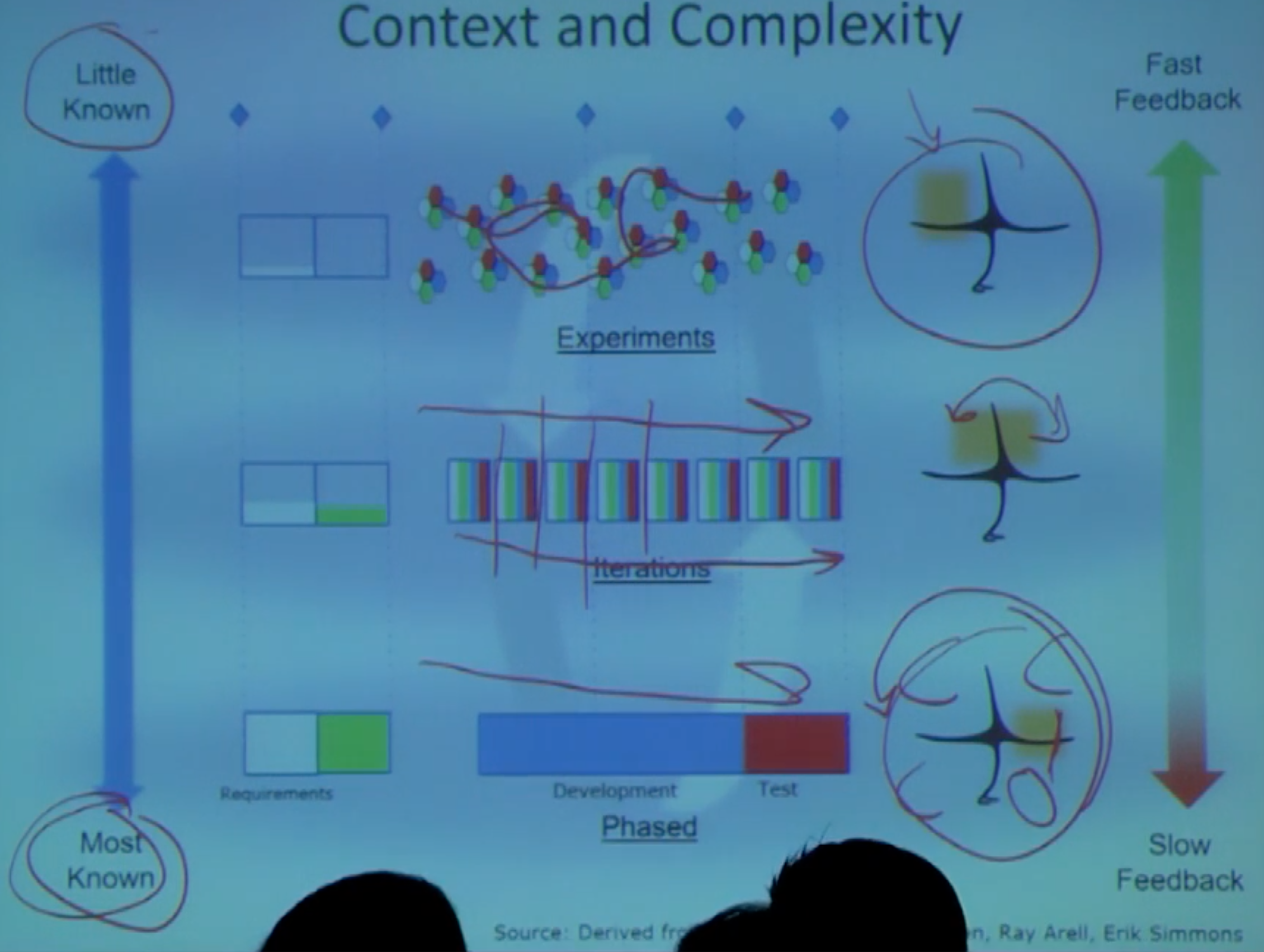 someone at intel
someone at intel
Conefyn Model (right of the slide) Obvious -> Complicated -> Complex -> chaotic
data science -> experiments, not construction -> experiments as first class citizens focus: learning
 in some systems
you can’t manage complexity
you can try to constrain the complexity
in some systems
you can’t manage complexity
you can try to constrain the complexity
WHO do I learn from (“design targets” Alan Cooper) THINGS trying to do - examples -> “most obvious things they try to do”
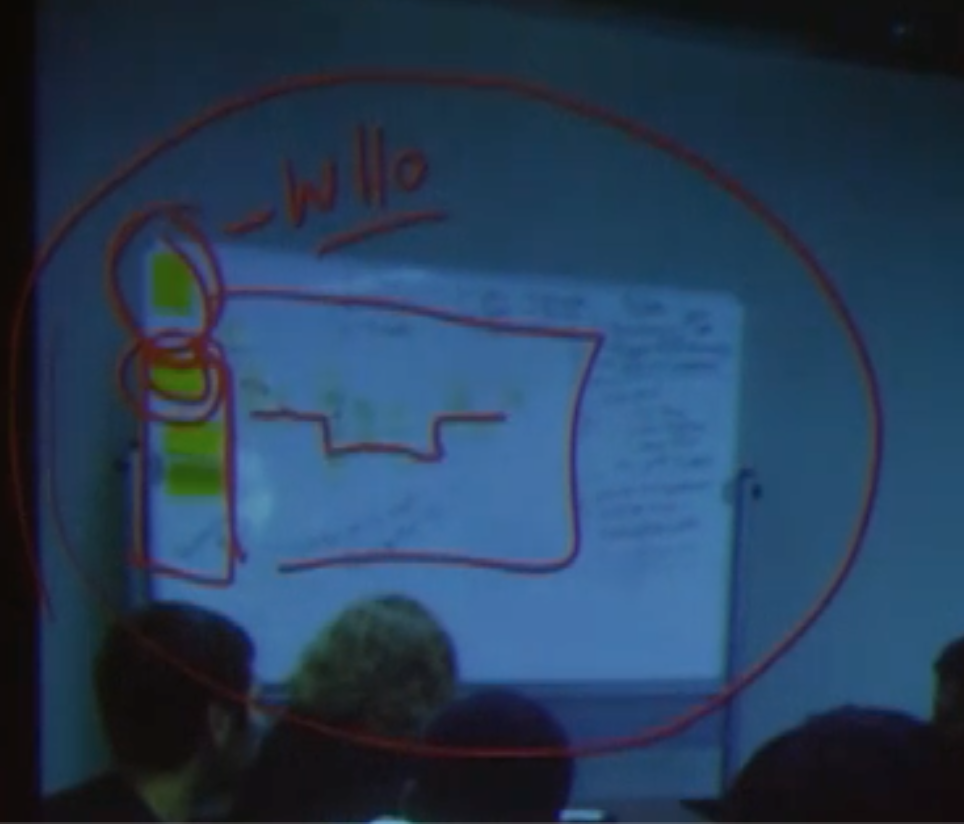 “journey” -> where do we want to go
“journey” -> where do we want to go
primary dimension: what do we want to learn secondary dimension: how many stories can we get done in a sprint
Product team
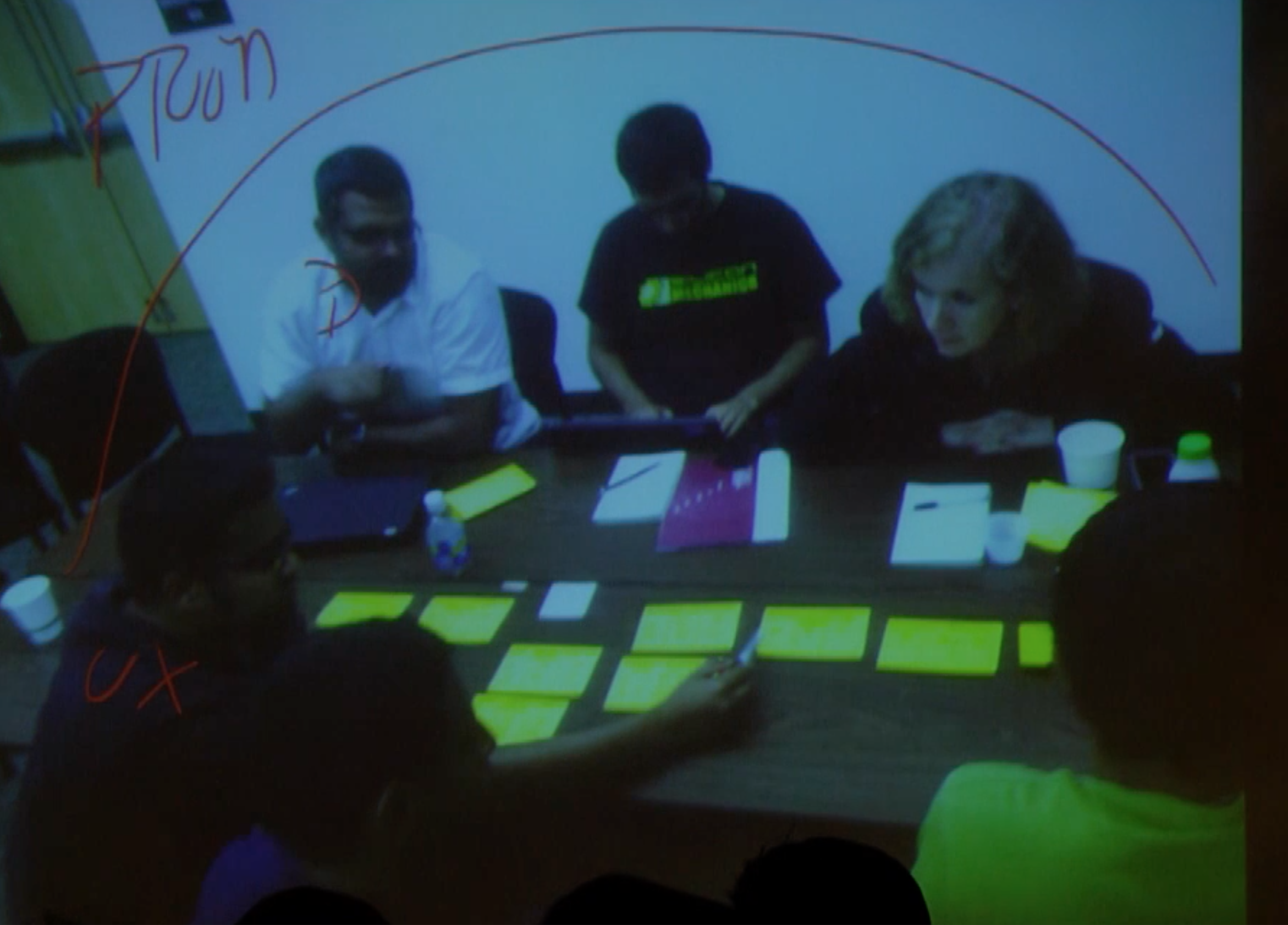 UX, dev, architect, tester, project manager
UX, dev, architect, tester, project manager
UX tells the stories, because he has had the most facetime with users
open space topic: how do you do discovery in a distributed environment?
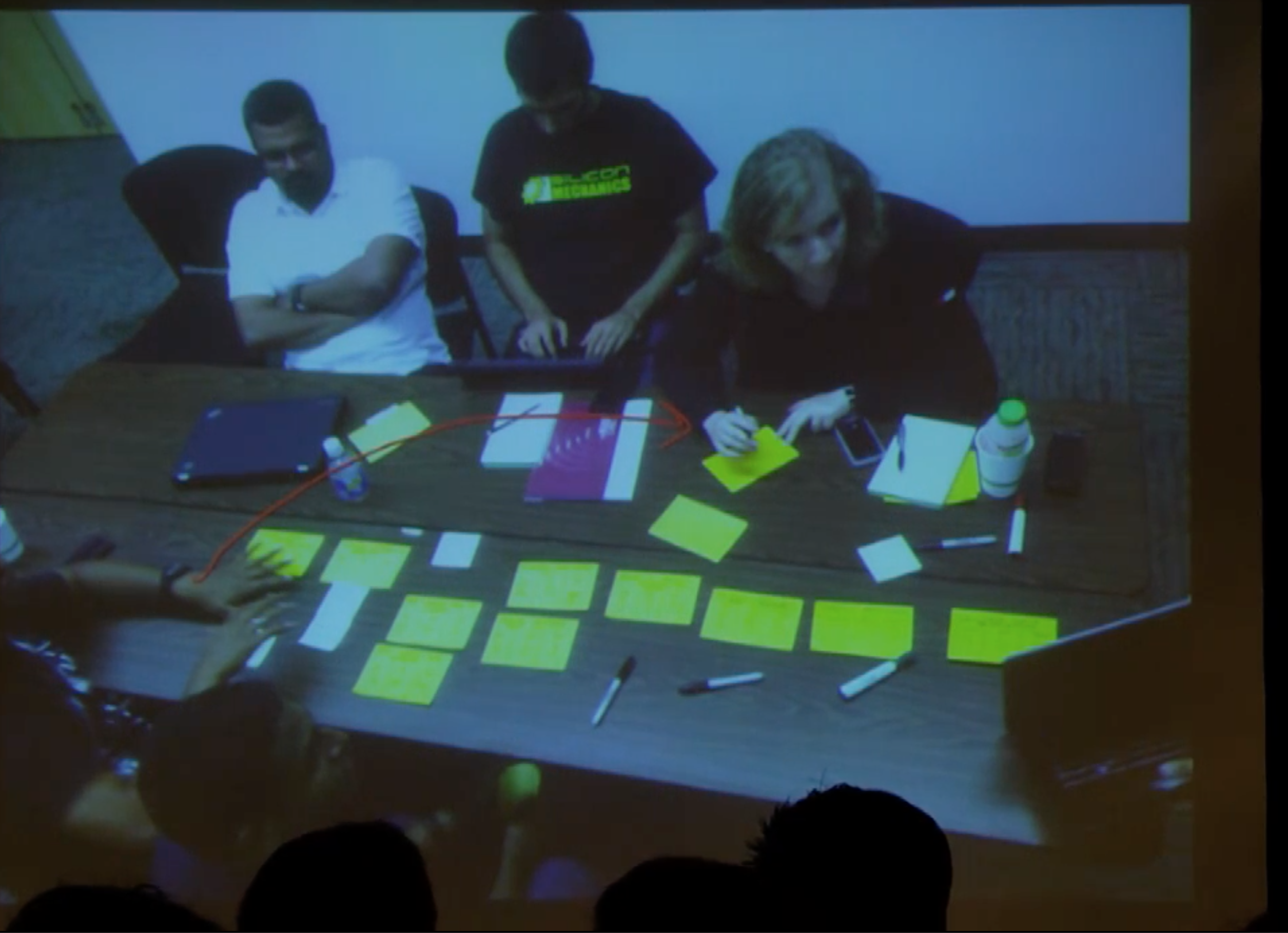
In YOUR team: How many people can tell a real customer story? -> how close are you to product, away from process
multiple perspectives - valuable - product (tester*) - useable - design (UX) - feasible - engineering (dev) * what do you choose to test?
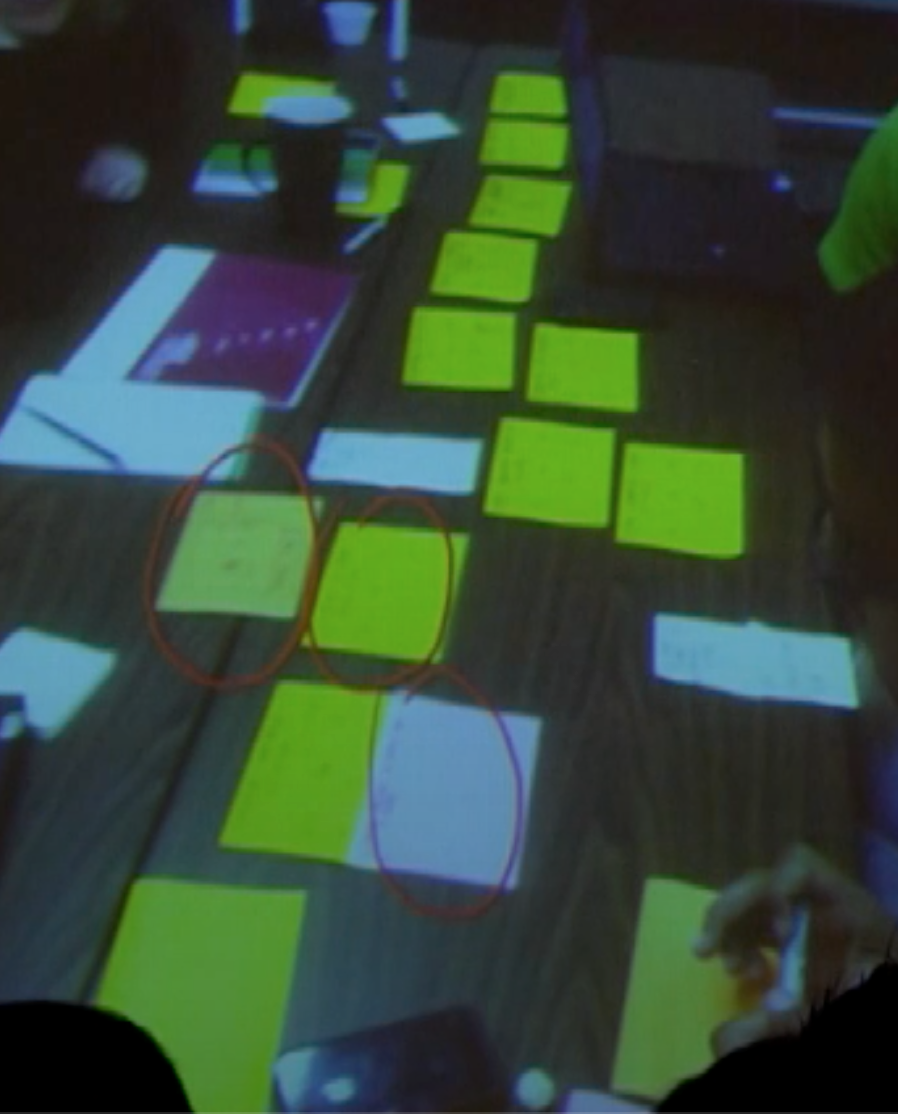 on the table (circled)
-> design - story - test
on the table (circled)
-> design - story - test
WHO is trying to do WHAT what might it look like how will we validate it with tests
test != click here test = statements of value test = how are you impacting them let’s add clarity with tests test = validation when is it done <-vs-> when is there value
MVP <> Minimal Viable Learning
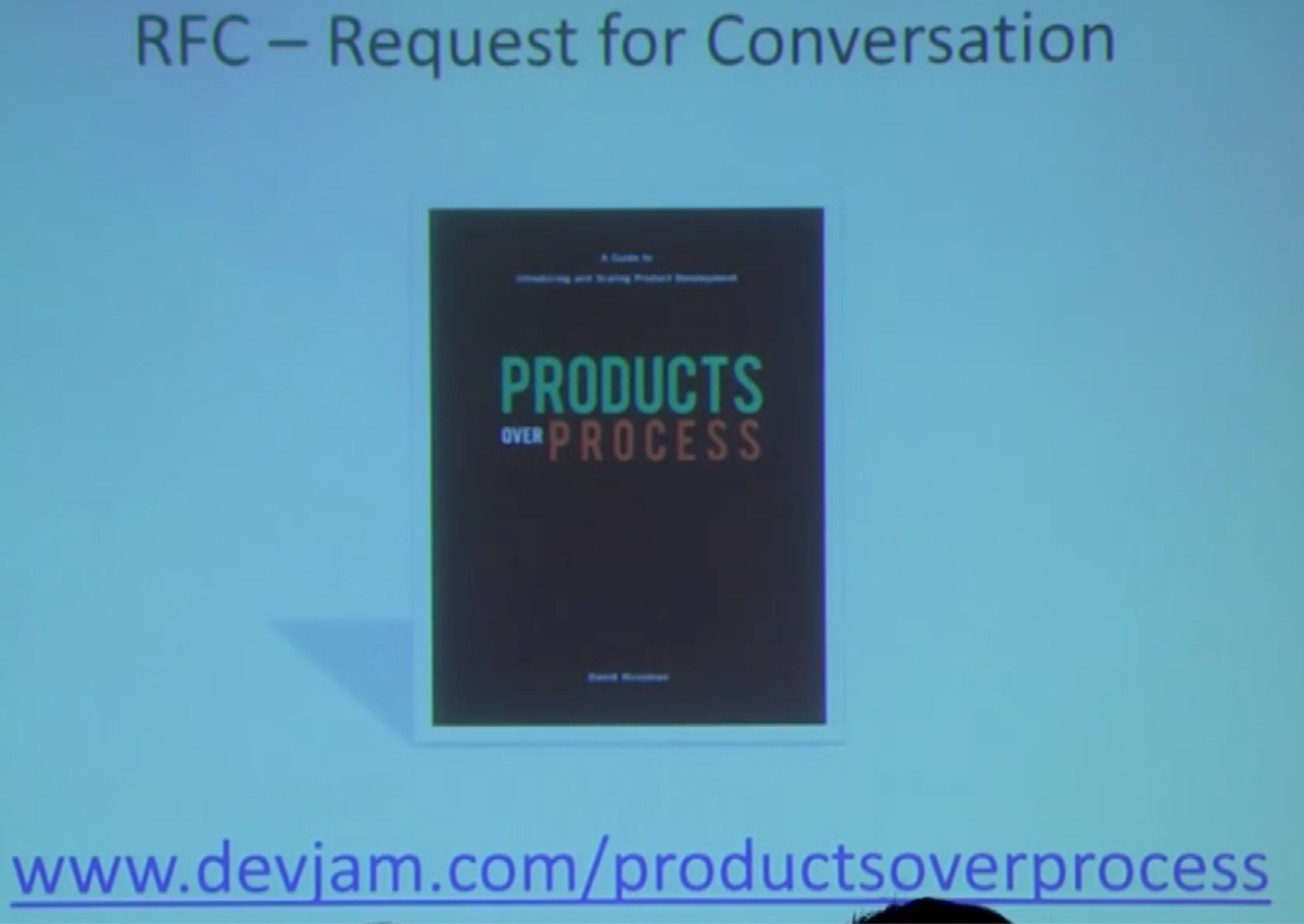
Doing the right thing assume you’re getting stuff done, are you doing the right thing
Q&A
delivery cadence
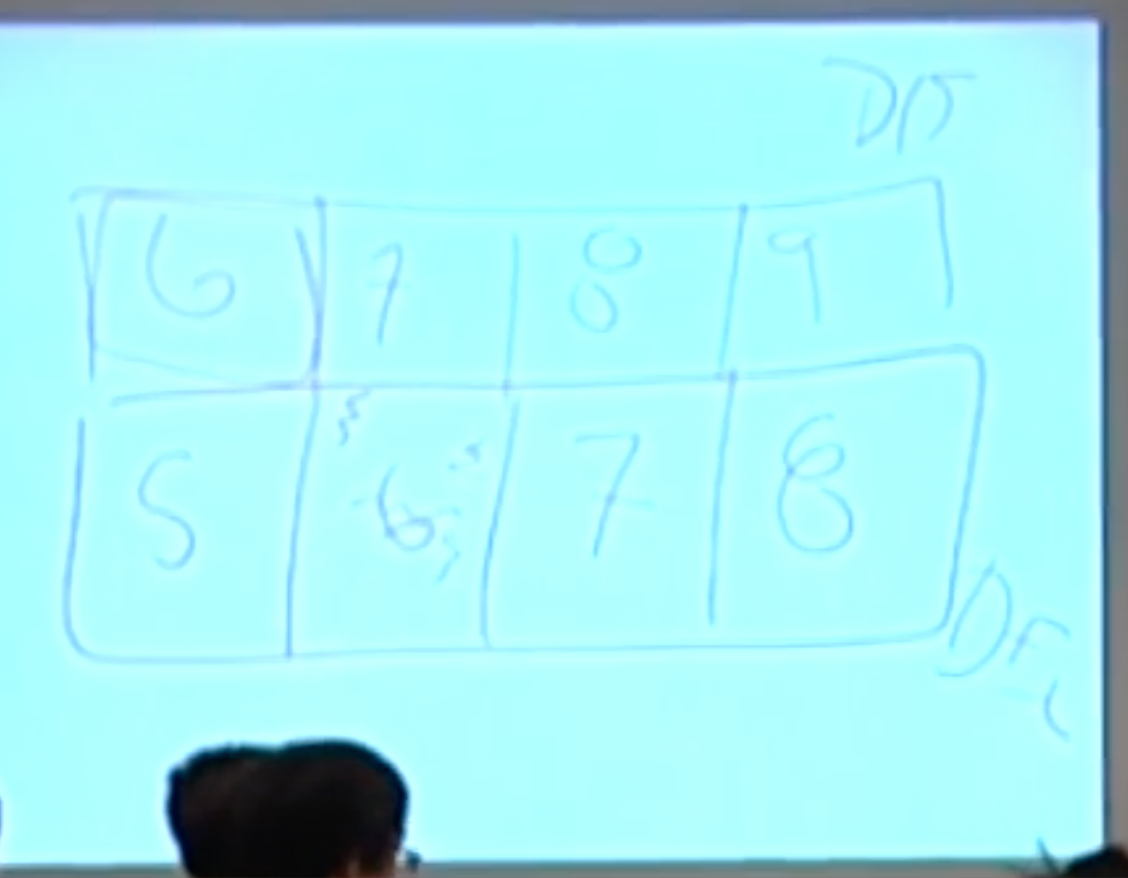 1 sprint ahead of discovery cadence
“grooming the backlog”
planning -> off topic “should we be doing this?”
- interviews
- prototypes
1 sprint ahead of discovery cadence
“grooming the backlog”
planning -> off topic “should we be doing this?”
- interviews
- prototypes
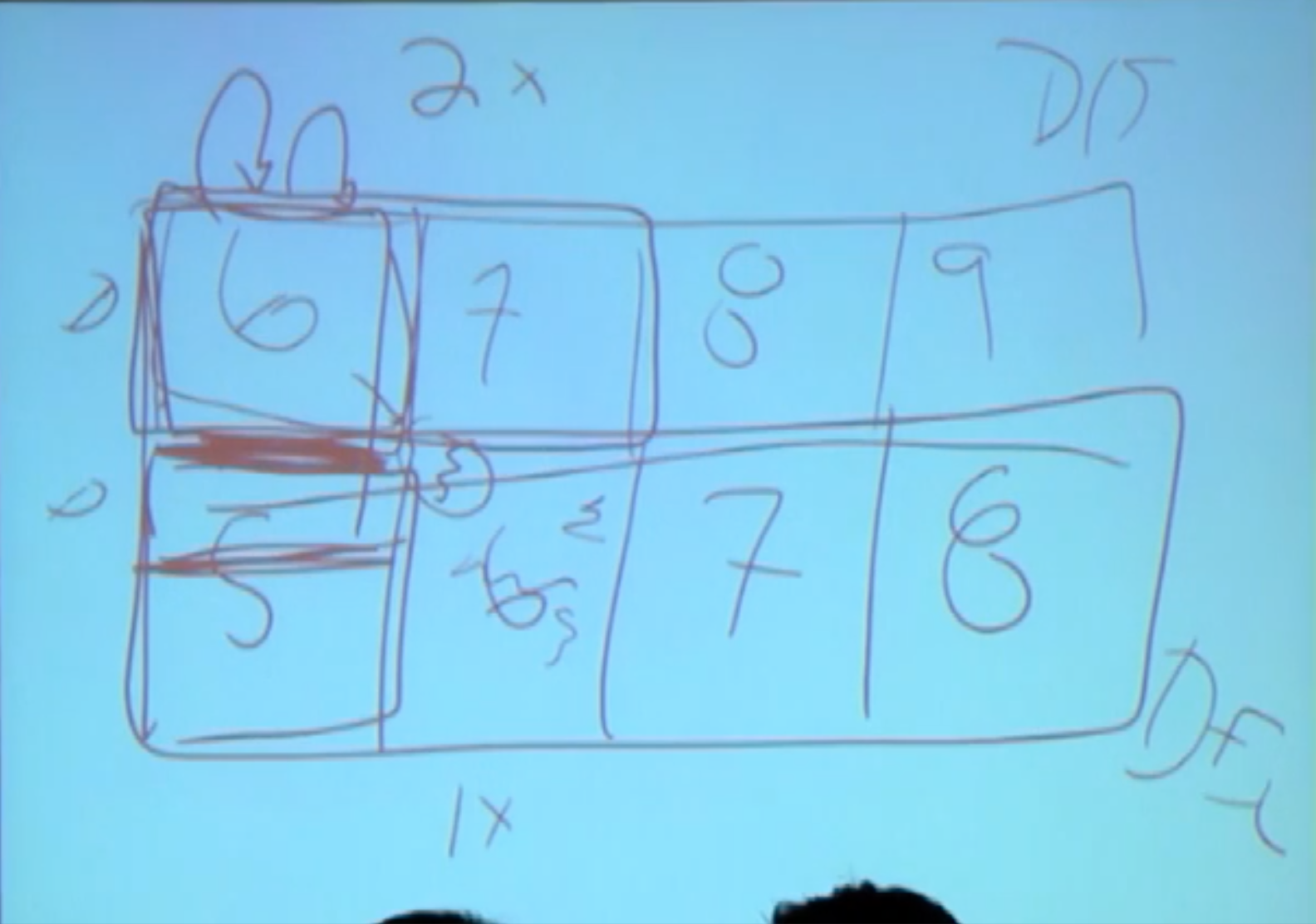 what if this sprint, we need to do more discovery?
what if this sprint, we need to do more discovery?
-–
too much discovery up front? eg. customer - 1 year product cycle design sprint “no more than 10% investment in raw discovery” -> evolved into blended model
4 sprints, then +- 20% estimate
my fear: “discover their way into not delivering”